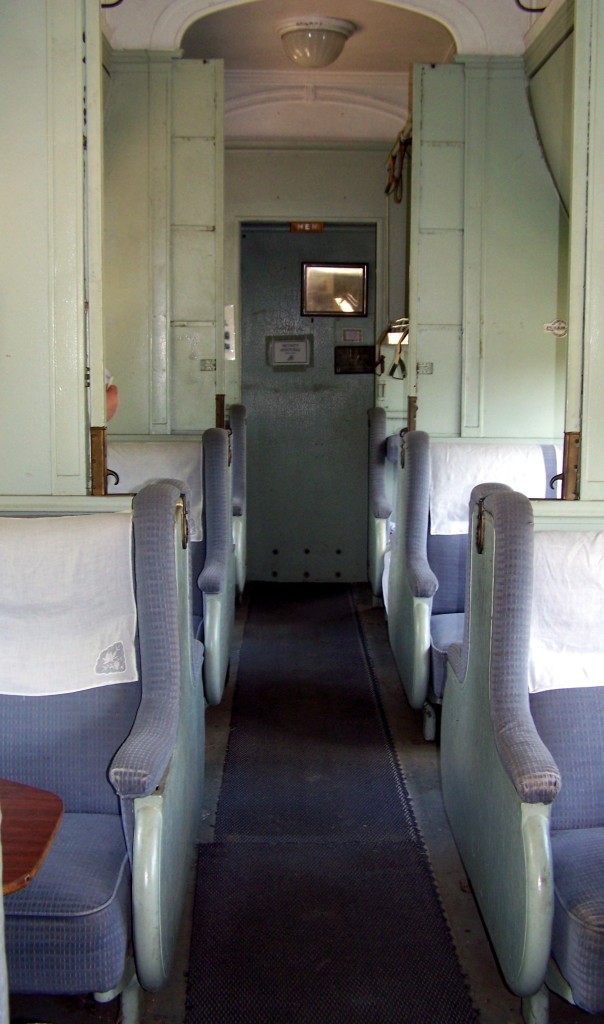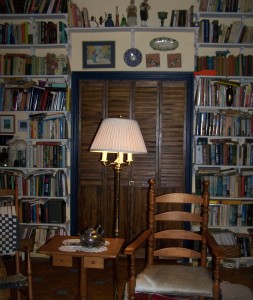Work continues – at a rather slow pace, admittedly – on the two books I have currently under construction, while I do research reading for them (in a small way) and work on projects to do with the Tiny Publishing Bidness. Which has just had two old corporate clients appear out of the woodwork; I don’t know how much we can do for the second, as the electronic files for their project are nonexistent, as their corporate history was produced and printed in about 1990. Thus technology marches on. I am wracking my memory, to see if I can come up with my own estimation as to when electronically-composed documents became the norm. I would guess around that time. I used to go back and generate training documents and various reports on a computer which also ran the automated music channel at EBS-Zaragoza in the late 1980s. This usually involved two large floppy disks (one for the operating system, one for my document archive) and a tiny screen of brilliant green letters on a black background. This writing process usually had me seeing white objects in shades of pink for at least an hour afterwards.
The other client is much more flexible regarding requirements for their project: a straight republication of their company history, which involved a tedious but not complex matter of taking apart one of the printed copies, carefully scanning page by page, and then reassembling a series of cleaned-up and resized photos in order. This brought me to meditating on technology generally, how things changed radically within a brief span of living memory. This last publishing project could now be done with scanner-copiers available and affordable for the home market trade – very unlike the printer/copier at one of my early military assignments; a behemoth the size of a VW bug, which probably cost about half the price of a small trainer jet.
Yes, in this precariously-blessed technological age, technology marches on. What was once a dream became a reality – and with such speed, between one decade and the next! I had a project a while ago, transcribing a series of letters from a young Yankee gentleman doing the 1850s version of the Grand Tour. Whilst in Paris, he ventured an off-the-cuff speculation that he would so much like to have a portable pocket telegraph, so that he could communicate more or less instantly with his family … of which he was very fond. This very same gentleman, upon accepting an offer of employment with the husband of his sister, was translated to the far frontier of New Mexico within a year or so of his stay in Paris. Likely he would have relished possession of his portable pocket telegraph, or a cell-phone even more. Such a device wouldn’t happen until a century and a half later … but as a mid-19th century man he was already looking to the bright future of technology, although I don’t think he realized quite how thoroughly advances in communication and transport would change everything about American life within two decades of penning his simple, homesick plaint.
The railway and the telegraph radically reshaped the American frontier and the lives of those who lived on it, as it existed between the Mississippi and the Pacific Coast in those years between the Civil War and the turn of the century. The Civil War accelerated the process – in that the transcontinental telegraph itself was completed under a certain sense of urgency at the start of the war, and the question of a route for a transcontinental railway was ultimately settled in the political secession of those who had favored a Southern route, which permitted those partisans of a northern or central route to plunge ahead. Of course, regular commerce with the Far West had been unknown: trading ships around the Horn to the west coast and the Gulf coast, river steamers up and down the Mississippi-Missouri, and regular caravans of freight wagons moved goods of every kind from staples to luxury goods to Santa Fe, to the Mormon settlements in Utah Territory, California and Oregon. But such traffic was slow, subject to seasonal interruptions, the occasional Indian raid, and prohibitively expensive besides.
All of this changed within a relatively short space of years, once the great surge of railway construction in the West wove cities and settlements into as close a net as the East had been. Now it was possible to accomplish a transcontinental journey in days, for a fraction of the cost, and in relative comfort. Manufactured goods from the East and raw material from the West moved just as readily. Witness the boom in Western beef cattle, facilitated by the advance of various branches of the transcontinental railroad. The railways themselves encouraged settlement along their various routes. Life in a Western settlement no longer meant isolation, hardship and crushing boredom. Entrepreneurs as diverse as Fred Harvey, Aaron Montgomery Ward, and George Pullman made fortunes in relation to railway service and inestimably improved the quality of life for westerners in general.
Consider this; a solitary rancher, mine-owner, farmer or small-town entrepreneur could now receive mail weekly or even daily, rather than once a month, or whenever a ship came into port. They could order furniture from a mail-order catalog and see it delivered in weeks, rather than years. Diners in restaurants as far removed as Tombstone, Arizona, and Galveston, Texas, could dine on fish fresh-caught in the Great Lakes, seasonal fresh vegetables from the mid-west, and drink orange juice from California cooled on ice harvested from New England lakes, as they read the latest New York newspaper – and all of this facilitated by rail and telegraph services. The Fred Harvey system sent their all their restaurant and hotel laundry to be done at a single corporate facility, maintained their own dairy and ranch … and had train conductors telegraph ahead, alerting the Harvey House at the next stop how many passengers planned to dine in the restaurant and lunchroom. The editor and publisher of a news magazine in Waco, Texas could build a nation-wide following – in part because of the ease of railway transportation. The working and middle classes in the west had wider horizons because through the railroad – and well-to-do easterners also had the opportunity to indulge in tourism, exploring spectacular scenery and entrancing local customs, while lapped in luxury and comfort. The world widened, in a way that that I think was only duplicated by the internet, offering access to information, people, and to places – even if just vicariously. Discuss.




Recent Comments